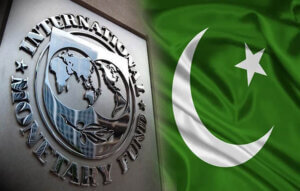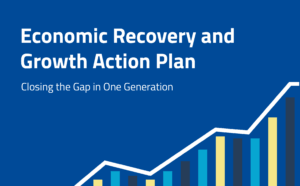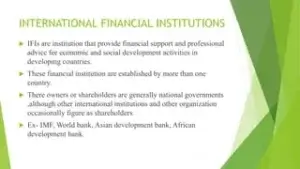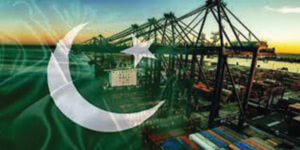Pakistan Economic Situation: Current Challenges and Future Prospects

Diving Deep into Pakistan’s Economic Situation of Challenges and Opportunities, Inflation, Debt, Reforms, and More.
IMF program, future of Pakistan economy.

Pakistan’s economic condition has remained an issue of hot debate and concern both at the domestic and international levels. Over the past decades, Pakistan has seen periods of growth and prosperity followed by periods of economic turmoil and crisis. So far, the country is facing inflation, debt burden, political instability, and an ailing industrial sector. However, the avenue of reform and growth which would ultimately take Pakistan to a long-term prosperity remains open.
In this article, we shall explore the essential features of Pakistan’s current state of economy, assess major challenges, and outline some of the possible strategies that can make it a prosperous economy for many more years.
Current Economic Problems in Pakistan
1. Inflation and Cost of Living
Inflation is one of the most significant issues against Pakistan’s economy. In the last few years, the Consumer Price Index has been rising rapidly. Food items, among many other necessities, have thus become costlier for the common man because of increasing costs. According to the Pakistan Bureau of Statistics, as of May 2023, inflation had accelerated to a record level of 38%. Rising global oil prices and the fall in the rupee value against other currencies are some of the factors fueling this kind of inflationary pressure, besides the supply chains disrupted by the pandemic of COVID-19.
This inflationary climate has really squeezed the spending power out of low- and middle-income families. They have been widely discontent with the situation.
Again, as argued above, the recent hikes in the prices of wheat, sugar, and even cooking oil have made food inaccessibly expensive for many families.
2. The Rise in Public Debt
Another significant issue is the public debt of Pakistan, where the country largely has been reliant on foreign loans to bridge its fiscal deficits. Its debt-to-GDP ratio is near about 73.5% in 2023, which would put Pakistan at a very vulnerable position if it is unable to manage its financial obligations. Countries have had to resort to international financial institutions such as the IMF, the World Bank, and the ADB for financial needs.
In a number of program bailouts from the IMF, it is revealed that even though the country needs its fiscal imbalances financed primarily through external channels, temporary relief through these programs always comes at an expense. Therefore, bailouts include conditions such as subsidy reductions, increases in taxes, and structural adjustments. Those policies, though critical to what is needed, were previously also that radical in nature and thus extremely unpopular. It also made economic hardships – in the short term – worse than they already were.
3. Devaluation of the Pakistani Rupee
There has been pressure on the rupee over the years, depreciation against the major currencies, such as the US dollar. As of September 2023, the dollar had hit over 300 to the rupee with a steep decline in its value. Erosion has led to a direct rise in the import bill; thus, there is inflation and increased cost of doing business within the country.
This deceleration is primarily due to the increasing current account deficit, whereby imports have risen while exports have declined, coupled with declining remittances from overseas Pakistanis. The dwindling reserves of foreign exchange had on occasion declined to alarmingly low levels, which further made it challenging for Pakistan to regulate its currency and, by extension, the country’s economy.
4. Energy Crisis
Another critical factor influencing Pakistan’s economic growth is the energy crisis. It is a constant problem Pakistan has been facing since quite some time back in electricity shortages, which caused relative power outages and load shedding. So, production in industrial establishments was affected and overall productivity decreased. Still, efforts to build more power generation capacity in recent years, massive inefficiency in the energy sector, antiquated infrastructure, and circular debt are still one of the major problems.
The power sector circular debt, that is, the chain of unpaid bills among energy producers, distributors, and consumers, stands at over PKR 2.5 trillion. This has been adding to the financial burden on the government and turning out to be quite a problem in generating a reliable and cheap energy supply for industries and household alike.
5. Low Tax Revenue Collection
Pakistan has one of the lowest tax-to-GDP ratios in the world, around 10% to 12%. The country leans extensively on indirect taxation, including sales and import duties, rather than direct taxes on income. This has led to a very regressive tax system where the burden disproportionately falls on lower-income groups. Most importantly, it has a wide range of tax evasion because tax mechanisms are very weak and the base is narrow, which left governments unable to collect adequate revenue for public services and development projects.
Significant challenges by vested interests and a large informal economy that stays outside the tax authorities’ purview have confronted efforts at broadening the tax base and improving collection.
Opportunities for Economic Recovery and Growth

While the challenges before the economy of Pakistan are huge, there also exists an opportunity for reform and growth. With some smart policies and strategic investments, things can be found to change for Pakistan in terms of changing its economic fortunes.
1. Modernization of the Agriculture Sector
Agriculture is still the very backbone of Pakistan’s economy, accounting for nearly 19% of the GDP. More than 40% of the country’s labor force is also employed in this sector. However, this sector suffers with low productivity, outdated farming practices, and inefficient usages of water and resources. Pakistan can significantly increase its agricultural output and export potential by investing in modern agricultural technologies, improving irrigation systems, and promoting sustainable farming practices.
There has recently been great interest in agritech solutions such as precision farming, drone technology, and smart irrigation systems to help boost yields while conserving resources. Value-added agriculture, which includes processing and packaging of foods, may also improve exports and raise domestic income from agriculture.
2. Industrial Development and Export Growth
Pakistan’s industrial sector has phenomenal growth opportunities in the textile, garments, and manufacturing sectors. The country remains the world’s second largest cotton-producing country, and its textile industry makes up over 60% of the total exports of the country. However, the sector has faced several challenges-including energy shortages, outdated machinery, and lack of innovative thinking in the enterprises.
Investments into modernizing the industrial base, upgrading worker skills, and upgrading energy supply will thus add to the competitiveness of the country in overseas markets. New export markets can be accessed along with higher-value products including ready-made garments and technology-driven industries for longer-term growth momentum.
3. CPEC and Infrastructure Development
China’s flagship project under the Belt and Road Initiative is the China-Pakistan Economic Corridor, which enhances infrastructure connectivity between China and Pakistan. With investments in roads, railways, ports, and energy projects, it aims to turn Pakistan into a trade and logistics hub of the region.
CPEC can enhance Pakistan’s economy by increasing the rate of employment, infrastructural development, and foreign direct investment. However, it is the government’s responsibility to ensure that all the projects concerning CPEC are executed effectively and its benefits are consciously delivered and shared equitably in this country. Furthermore, the local industries should be involved in the development process of CPEC for a long-term survival.
4. Information Technology and Digital Economy
IT has grown quite significantly in the last decade in Pakistan and shares some of its major driving forces in this economy, such as software development, IT services, and e-commerce. There is a large pool of skilful IT professionals here, and its tech startups have also gained some attention on the world map.
The expansion of the digital economy creates formidable opportunities, including job opportunities, growth in exports, and innovation. To better empower Pakistan’s burgeoning IT sector, entrepreneurship should be promoted, investment made in digital infrastructure, and a facilitative regulatory environment should be evolved.
5. Human Capital Development
Pakistan must invest in human capital to ensure long-run economic prosperity. Presently, it has an emerging and young population; more than 60% of the people are under the age of 30. However, a lot of efforts are required to develop the education and health systems so that this demographic advantage converts into economic prosperity.
Pakistan shall better emerge as a quality producer of a productive and competitive workforce from an improved education, vocational training, and healthcare scenario. For that matter, empowerment and encouragement of women along with greater participation in the workforce would contribute to potentially further untapped capabilities for economic development.
The International Financial Institutions

Pakistan’s engagement with the international institutions is one of the key stabilisers on trying days. The Extended Fund Facility has been a great source of financial respite for Pakistan, helping Pakistan manage its external debt and further stabilize its currency. However, it forms part of a tough bargain, which consists of fiscal austerity measures that, in turn, have stirred up some uneasiness regarding its social-welfare implications and adverse impact on economic growth.
While much needed relief the IMF programs might provide at least in the short run, Pakistan needs structural reforms to achieve growth that is sustainable. This involves structural action aimed at reducing the causes of its fiscal imbalances for instance, by tax reform, improving governance, and making it easier to do business.
Conclusion: The Road Ahead for Pakistan’s Economy

Pakistan is at a crossroads. In one sense, it has a serious set of structural challenges-inflation, debt and energy shortages-which now all have to be comprehensively addressed through reforms. On the other hand, there are huge opportunities for growth in agricultural, industrial, IT, and infrastructure development enduses.
Therefore, for long-term economic stability and prosperity, Pakistan must institutionalize its critical elements, strengthen governance, and attract investments and innovators. This potential can be achieved through the reinforcement of such strengths with the necessary reforms capable of overcoming the state’s economic challenges within this crisis.
